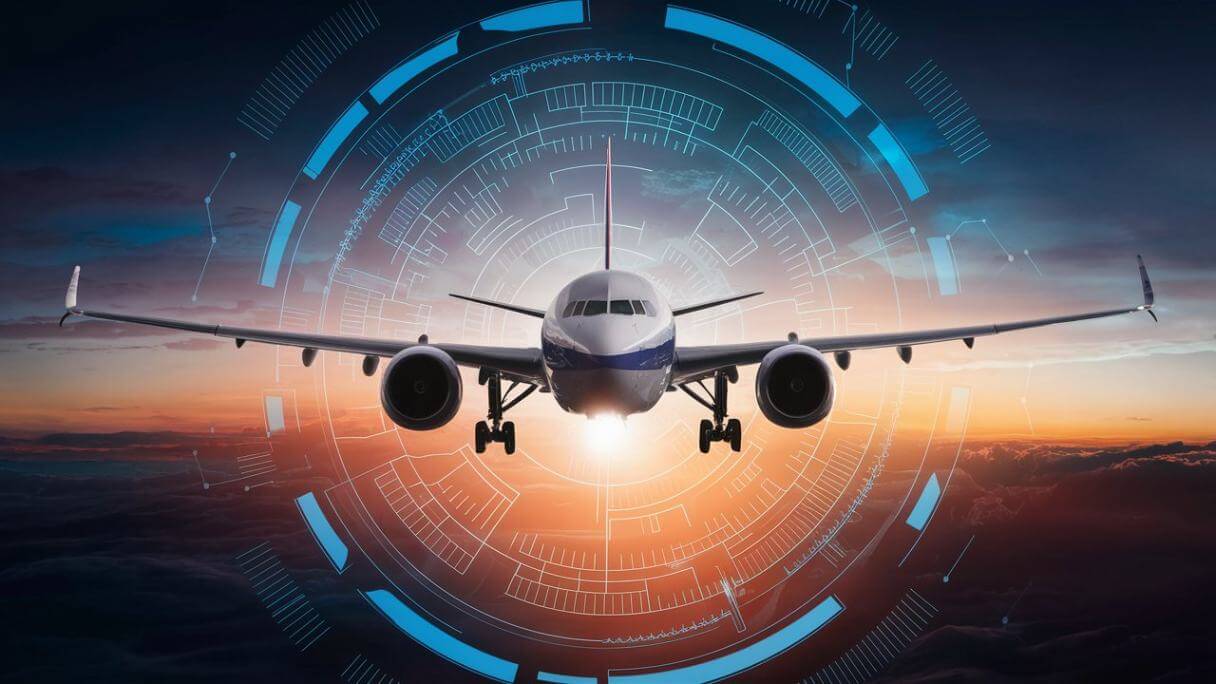The aerospace industry is on the cusp of a technological revolution, driven by the integration of AI and digital twin in aerospace. These technologies are not just buzzwords; they are reshaping how aerospace systems are designed, tested, and operated. The combination of Artificial Intelligence (AI) and digital twin technology offers unprecedented opportunities to innovate, optimize, and enhance the functionality and safety of aerospace systems.

Understanding AI in Aerospace
AI in aerospace refers to the use of machines and software that can mimic human cognitive functions such as learning and problem-solving. This technology is being leveraged to enhance everything from aircraft design and manufacturing to operations and maintenance. Component inspection using AI ensures higher precision and reliability, reducing human error significantly.
The Role of Digital Twins
Digital twins are virtual replicas of physical systems. In the aerospace sector, digital twins can simulate the performance of an aircraft under various conditions without the risks associated with real-world testing. This capability allows engineers to predict potential failures and maintenance needs before they occur.
How AI and Digital Twin Work Together
The synergy between AI and digital twin in aerospace is where the magic happens. AI can analyze vast amounts of data collected from digital twins, providing insights that were previously unattainable. This data-driven approach enables the optimization of aircraft performance, enhances safety measures, and reduces operational costs.
Design Optimization and Testing
By leveraging AI, aerospace engineers can create more efficient designs by testing a broader range of scenarios than ever before. This process is revolutionizing the way new aircraft are developed, leading to designs that are not only more efficient but also more sustainable.
Predictive Maintenance
One of the most significant benefits of integrating AI and digital twin technologies is in predictive maintenance. By continuously monitoring the health of an aircraft, these technologies can predict component failures before they happen, minimizing downtime and extending the life of the aircraft.
Impact on Aerospace Operations
The impact of AI and digital twin technologies extends beyond the design and maintenance of aircraft. They are also transforming aerospace operations, making them more efficient and safer. For instance, AI algorithms are being used in air traffic control systems, enhancing decision-making and reducing the risk of human error.
Flight Simulation and Training
Digital twins are also being used to create highly realistic flight simulations. These simulations are essential for pilot training, allowing pilots to experience a wide range of scenarios in a controlled environment.
Enhanced Safety Protocols
By analyzing data from digital twins, AI can identify potential safety risks and suggest improvements to existing protocols. This capability is critical in ensuring the safety of passengers and crew.
The Future of AI and Digital Twin in Aerospace
The future of AI and digital twin technologies in aerospace is bright. As these technologies continue to evolve, they will play an increasingly important role in shaping the future of aviation. From autonomous aircraft to more efficient air traffic management, the possibilities are endless.
Integration with Other Technologies
The integration of AI and digital twin technologies with other emerging technologies like the Internet of Things (IoT) and blockchain will further enhance their capabilities, leading to even more groundbreaking innovations.
Environmental Sustainability
In the quest for more sustainable aviation, AI and digital twins will be pivotal. By optimizing flight paths and improving fuel efficiency, these technologies can significantly reduce the carbon footprint of the aerospace industry.
Conclusion
The integration of AI and digital twin in aerospace is a game-changer, offering unprecedented opportunities to enhance the safety, efficiency, and sustainability of aerospace systems. As these technologies continue to evolve, they will undoubtedly play a critical role in shaping the future of the aerospace industry.

FAQs
What are digital twins in aerospace?
Digital twins in aerospace are virtual models of physical systems that allow for simulation and analysis of an aircraft’s performance.
How does AI enhance aerospace safety?
AI enhances aerospace safety by analyzing data to predict and prevent potential failures, thereby reducing the risk of accidents.
What is the future of AI in aerospace?
The future of AI in aerospace involves further integration with other technologies, leading to more autonomous and efficient aviation systems.
For more insights on AI and its applications in aerospace, visit Neural Concept.

